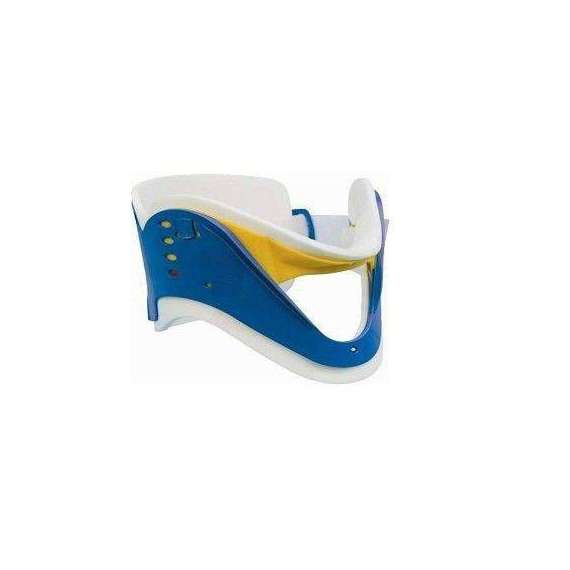Ambulance Collar
Description
Description
Ambulance Collar limits head movement and ideal for cervical immobilization of accident victims during transportation. When a person who has suffered from a trauma or injury is transported from the accident scene to a hospital a Trauma Cervical Immobilizer comes in handy to provide temporary cervical immobilization. This is important when there is a suspected spinal injury. A trauma collar has a major role in pre-hospital care to prevent further injuries. Patients with suspected or possible cervical spine injury must have their cervical spine properly immobilized with a Trauma Collar until formal assessment occurs. The hospital staff handling these patients must be continually cognizant that injudicious manipulation or movement, and inadequate immobilization can cause additional spinal injury and decrease the patient’s overall prognosis. Even minor injuries result in major consequences.
Importance of using a Trauma Collar:
- Injured patients may have an unstable injury of the cervical spine
- Further movement of the cervical spine could cause additional damage to the spinal cord, over and above that already caused by the initial trauma itself
- The application of a trauma collar prevents potentially harmful movements of the cervical spine
- Immobilization of the cervical spine is a relatively harmless measure, and can, therefore, be applied to a large number of patients with a relatively low risk of injury “as a precaution”
Features of Ambulance Collar – Trauma collar
- Single-piece, flat design with easy-to-form chin cup for quick application and convenient storage.
- Semi-rigid plastic, padded with sturdy foam, provides comfortable immobilization to limit the neck movement
- A large trachea opening allows airway management.
- Well ventilated to keep the patient’s neck cool and dry.
- Pre-formed chin ensures proper immobilization, provides rest & comfort to the chin.
- A large opening allows easy breathing.
- Useful in temporary cervical immobilization for accidental victims during transportation & diagnostic studies.
- Form the chin cup by inserting black ratchet into the hole provided in the plastic base.
- Insert the velcro loop-end under the neck of the accident victim (if lying on the back) and then bring the chin-cup under the chin of the victim.
- Fix the velcro loop over the hook ensuring a proper fit.
Common Injuries & Disorders
- Emergency Neck Support
Features
- Neck
Reviews
No reviews found

